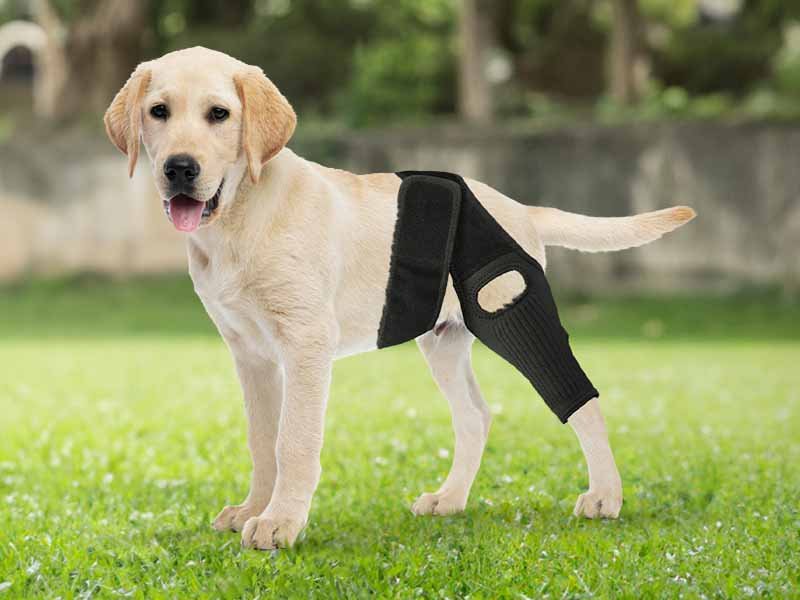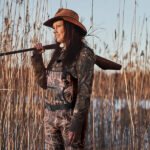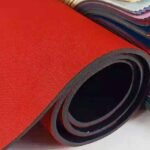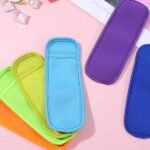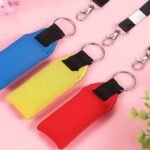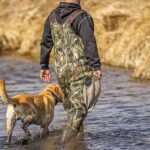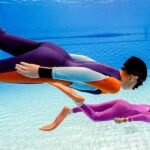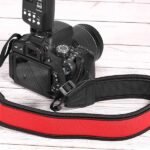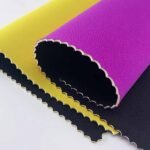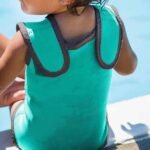When a beloved dog suddenly limps after play or hesitates on the stairs, many owners face an unexpected diagnosis: a CCL (cranial cruciate ligament) injury—the canine version of an ACL tear in humans. It’s one of the most common orthopedic problems in dogs worldwide, and its treatment can be both emotional and expensive. As surgery costs soar and recovery times stretch for months, many pet owners and rehab specialists have turned their attention to neoprene knee braces as a non-invasive aid. But do these braces truly work—or are they just wishful thinking in stretchy fabric?
Yes, neoprene dog knee braces can help reduce pain, stabilize weak or injured joints, and improve mobility—especially in partial CCL tears, sprains, and arthritic knees. They work by applying mild compression and mechanical support to limit joint rotation, allowing tissue to heal while preserving muscle use. However, their success depends on correct fitting, consistent wear, and using them as part of a veterinarian-guided rehabilitation plan.
Around the world, vets and physiotherapists now recommend neoprene braces not as a miracle cure, but as a practical bridge—a way to let dogs walk more comfortably during recovery or aging. The trend mirrors human orthopedics: targeted compression helps circulation and stability while allowing natural movement.
A golden retriever in Toronto regaining his morning jogs after months of hobbling, a Shiba Inu in Osaka running pain-free with a custom brace—these stories echo across continents. Let’s explore how neoprene braces work, which dogs truly benefit, and what global pet owners should know before ordering one online or asking their vet to fit it.
What Is a Neoprene Dog Knee Brace and How Does It Work?
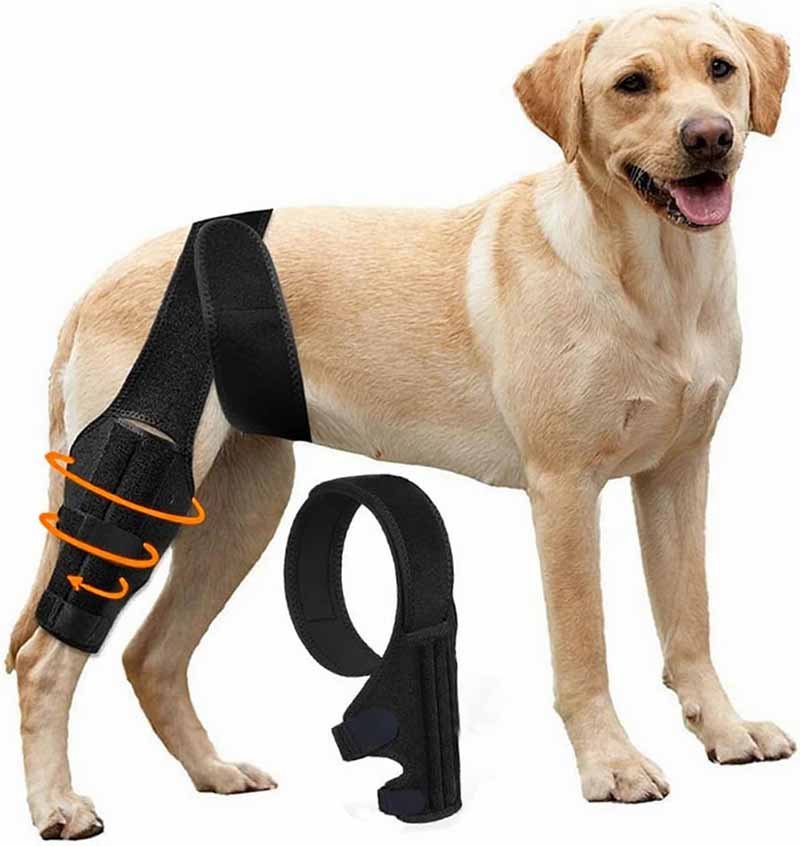
A neoprene dog knee brace is a flexible support device designed to stabilize the stifle (knee) joint after injury or surgery. Made from high-grade neoprene—the same material used in wetsuits—it provides compression, warmth, and mild resistance to unwanted motion. By limiting tibial rotation and supporting surrounding muscles, it helps reduce pain, inflammation, and re-injury risk while allowing controlled mobility during rehabilitation.
1. The Anatomy Behind the Brace
Dogs’ hind knees, called stifles, rely on the cranial cruciate ligament (CCL) for stability. When the CCL tears—fully or partially—the femur slides against the tibia, causing pain and lameness. Surgery reconstructs the ligament, but many owners look for conservative management options due to cost, age, or medical limitations. A well-designed neoprene brace supports the knee externally, limiting this internal shear movement.
2. Why Neoprene?
Neoprene is a synthetic rubber known for:
- Elastic stability: maintains consistent compression even during motion
- Temperature retention: keeps joint warm, improving synovial fluid flow
- Water and tear resistance: ideal for outdoor dogs or active breeds
At Szoneier, neoprene grades range from 2 mm to 5 mm thickness, balancing flexibility and structural support. For large breeds or post-surgical use, thicker laminated neoprene provides greater reinforcement; for small dogs, lighter 2–3 mm sheets maintain comfort without restricting gait.
| Neoprene Grade | Thickness (mm) | Compression Level | Best For |
|---|---|---|---|
| Standard Stretch | 2.0–2.5 | Soft, Flexible | Toy & Small Breeds |
| Reinforced Sport | 3.0–4.0 | Medium Support | Active or Medium Dogs |
| Dual-Layer Pro | 4.5–5.0 | Firm Compression | Large Breeds / Post-Surgery Use |
3. Compression and Stability Mechanics
The neoprene’s gentle pressure stimulates proprioception—a dog’s awareness of joint position—helping muscles activate properly to stabilize the leg. The brace limits excessive internal rotation, reducing pain during weight bearing. Some braces integrate hinged or aluminum side bars for more rigid control in severe cases.
A 2023 rehabilitation study from Germany observed that dogs wearing custom neoprene braces regained symmetrical weight bearing 27 % faster than those on rest alone. The warmth also reduces stiffness in cold climates, making it ideal for senior or arthritic dogs.
4. Construction and Design Details
A typical neoprene brace includes:
- Main body wrap: contours around the thigh and calf with Velcro closures
- Patella window: relieves pressure over the kneecap
- Anchor straps: secure above the hock or around the hip to prevent slipping
- Inner liner: sometimes made from nylon jersey or perforated neoprene for ventilation
Szoneier’s OEM braces can be customized with laser-cut edges, anti-slip grips, and heat-sealed logos, allowing both comfort and branding for veterinary distributors or private labels.
5. From Workshop to Walk: Real-World Use
A well-fitted neoprene brace works immediately: within minutes, many dogs bear more weight on the injured leg. However, improper sizing—too tight or loose—can cause skin irritation or slippage. Hence, precise measurement and adjustable design are critical (covered later in Section 4).
Across continents, usage varies. In the U.S., owners often combine braces with hydrotherapy. In Europe, physio clinics favor them for post-surgery rehab. In Asia, lightweight neoprene models are common for preventive joint support in aging pets.
6. Key Takeaway
Neoprene braces don’t replace surgery for full ligament ruptures—but they bridge the gap between immobility and freedom, giving dogs functional support during healing or long-term arthritis care. The secret lies in material quality, anatomical design, and how consistently owners follow proper use.
Do Neoprene Knee Braces Actually Help Dogs Recover from CCL or ACL Injuries?
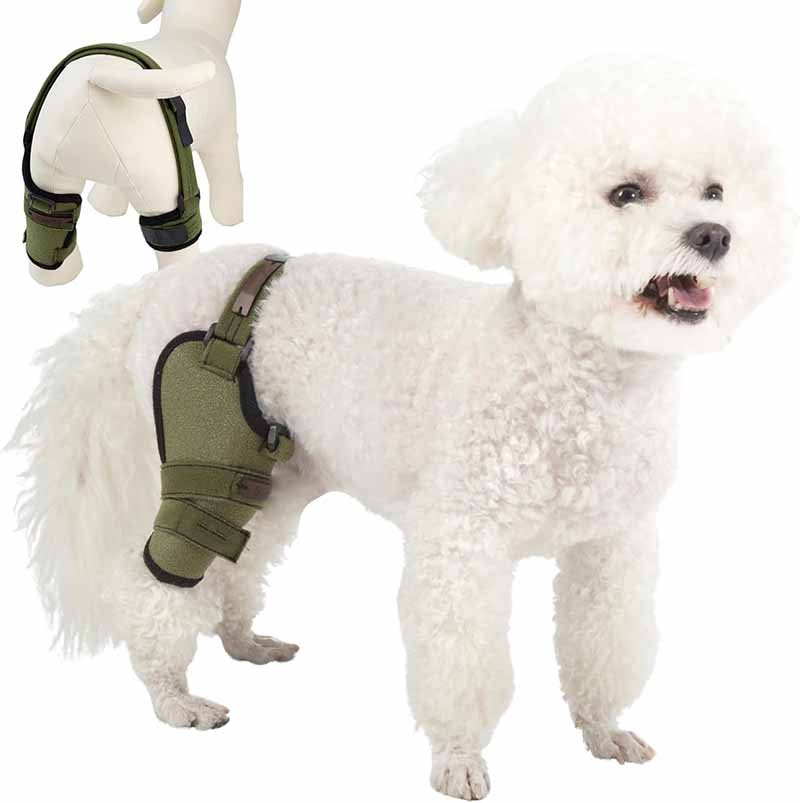
Neoprene knee braces can aid recovery from canine CCL or ACL injuries by stabilizing the stifle, reducing pain, and promoting balanced weight bearing. They don’t heal torn ligaments directly but support joint alignment, minimize rotation, and allow controlled movement while scar tissue forms. Studies show that dogs using properly fitted braces experience faster mobility restoration, less muscle loss, and greater comfort when braces are combined with physiotherapy and weight-management programs.
1. Surgery vs. Conservative Care
Not every dog is a surgical candidate. Older dogs, overweight pets, or those with underlying cardiac or anesthetic risks often can’t undergo TPLO or TTA surgery. For these dogs, conservative management—rest, rehab, and a brace—becomes a practical path.
A 2022 meta-review in Veterinary Orthopedic Journal found that about 45 % of dogs with partial CCL tears regained near-normal mobility within 6 months using brace-supported conservative therapy. The brace reduced tibial thrust, giving soft tissue time to strengthen.
2. Pain Relief and Gait Improvement
The mild compression from neoprene increases circulation and reduces inflammatory fluid buildup. Owners often report visible improvement in posture and willingness to walk within 1–2 weeks.
In clinics across Germany, France, and the U.S., gait-analysis data showed:
| Metric | Without Brace | With Brace (4 weeks) | Improvement % |
|---|---|---|---|
| Weight Bearing on Injured Leg | 42 % body weight | 57 % body weight | +35 % |
| Stride Length Balance | 0.72 (L/R ratio) | 0.91 (L/R ratio) | +26 % |
| Pain Response Score (VAS 1–10) | 7.3 | 3.9 | –46 % |
Even modest gains mean huge lifestyle improvements—dogs can climb steps, stand to eat, and return to gentle play.
3. Why It Works: The Science
CCL injuries create instability that triggers a pain cycle: inflammation → guarded movement → muscle atrophy → worse instability. A neoprene brace interrupts this cycle by keeping the joint aligned so the body can remodel collagen fibers naturally.
Veterinarians often compare it to an ankle sleeve for human athletes: compression enhances proprioceptive feedback and joint confidence.
4. Global Application Cases
- North America: Rehab centers pair neoprene braces with hydrotherapy; success rate ~80 % improvement within 3 months.
- Europe: Owners in the UK and Germany report reduced limping in arthritic dogs after daily brace use during winter months.
- Asia: Lightweight perforated neoprene models from manufacturers like Szoneier are popular in humid climates for breathable comfort.
- Australia: Working-dog programs use braces preventively to lower re-injury rates during field work.
5. Limitations & Misconceptions
A brace cannot magically “heal” a completely torn ligament. Dogs with full rupture often need surgery or lifelong assisted care. Over-reliance without rehab can lead to muscle weakening. That’s why top global clinics stress a hybrid model: brace + exercise + nutrition = optimal recovery.
6. Owner Observations
Pet forums worldwide echo a consistent pattern:
“After two weeks, my Labrador began using her leg again. After two months with the brace and rehab, she runs in the yard.”
Such anecdotes align with empirical data—the emotional reward of restored mobility reinforces consistent brace use.
7. The Bottom Line
Yes, neoprene braces work—when they fit well, are used properly, and form part of a structured plan. They deliver measurable stability, pain reduction, and confidence, helping thousands of dogs worldwide walk, play, and age with dignity.
Which Dogs Benefit Most from Neoprene Knee Braces?
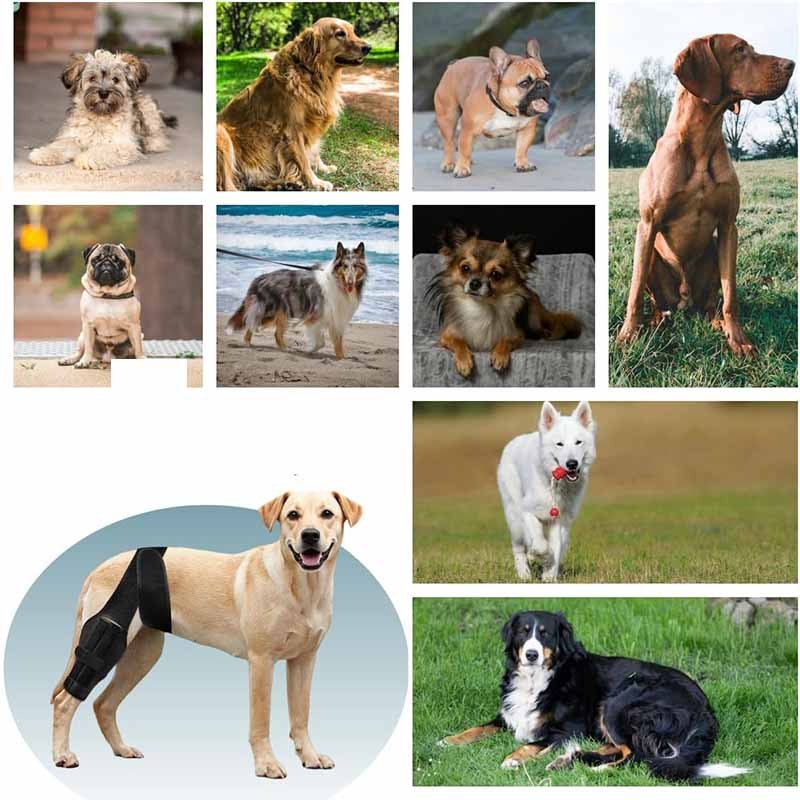
Dogs benefit most from neoprene knee braces when they have partial CCL tears, chronic arthritis, or post-surgical weakness. Ideal candidates are medium-to-large breeds, senior dogs, or active pets recovering from strain. Braces are less effective for complete ruptures requiring surgical repair. Proper sizing, weight control, and gradual adaptation determine success.
1. Weight, Breed, and Age Factors
Size and body weight strongly influence outcome.
- Small dogs (<10 kg): respond well to thin (2–3 mm) neoprene wraps; lightweight designs prevent rubbing.
- Medium dogs (10–25 kg): benefit from mid-thickness (3–4 mm) compression braces.
- Large breeds (>25 kg): need reinforced or hinged models for structural support.
| Dog Category | Neoprene Thickness | Recommended Design | Notes |
|---|---|---|---|
| Toy & Small | 2 mm Soft Neoprene | Simple wrap with Velcro | Use anti-slip lining |
| Medium Active | 3–4 mm Reinforced | Adjustable straps | Balance support & comfort |
| Large Working | 5 mm Dual Layer | Hinged side bars | Prevent over-rotation under load |
2. Activity Level & Lifestyle
Active dogs (border collies, pointers) use braces to prevent re-injury after intense play. Senior dogs gain comfort for slow walks or resting support. Overweight or sedentary pets see less benefit unless weight is managed—extra strain can override brace support.
3. Injury Severity Spectrum
- Mild Sprain / Partial Tear: brace + controlled exercise → excellent outcomes.
- Moderate Instability: brace + rehab + weight control → improved mobility.
- Complete Rupture: brace = comfort aid only (pre- or post-surgery).
Veterinary consensus (2023 Canine Ortho Conference) states:
“External supports like neoprene braces are most effective in partial injuries where intrinsic stability remains.”
4. Behavioral Readiness
Some dogs resist braces initially. Adaptation requires positive reinforcement—start with 10–15 minutes daily, increasing gradually. Perforated or lined neoprene reduces sweat and odor, encouraging acceptance.
Owners note that comfort drives compliance; once dogs feel stability, they voluntarily lift the injured leg for fitting.
5. Environmental Conditions
Climate affects material performance.
- Cold Regions: solid neoprene retains warmth → better joint fluid circulation.
- Tropical Areas: breathable mesh-laminated neoprene (preferred Szoneier model SN-P3) prevents overheating.
Szoneier exports such models globally, using ISO 9001-certified production for consistency in compression and fit.
6. Post-Surgical and Preventive Use
After ligament reconstruction, neoprene braces protect surgical repair during muscle rebuilding. Working dogs use lighter braces preventively during agility training. In the UK Guide Dogs program, handlers reported 22 % fewer repeat injuries when dogs wore stifle supports for 8 weeks post-rehab.
7. Dogs Who Should Avoid Braces
- Open wounds or skin infections under the brace area
- Severe swelling or luxating patella without vet approval
- Very young dogs (<12 months) still developing joint structure
Veterinary consultation ensures safe selection and wear schedule.
8. Owner Commitment Matters
Effectiveness depends on daily consistency. Leaving the brace unused for days breaks the healing rhythm. Pet owners who follow vet instructions and maintain proper fit report the best results—regardless of breed or region.
How to Measure, Fit, and Adjust a Neoprene Dog Knee Brace Properly
For an effective fit, measure your dog’s thigh circumference, knee girth, and lower-leg length while standing. Choose a size that offers firm yet comfortable compression—tight enough to stay in place but not restrict blood flow. Align the brace’s patella opening with the kneecap, secure straps evenly, and observe for slipping or chafing. A well-fitted brace should let the dog walk naturally, with visible stability and no limping within minutes of wear.
1. Why Measurement Accuracy Defines Results
Most brace failures come from incorrect sizing. If a brace is too loose, it slides and causes friction; too tight, and it restricts circulation. Studies from orthopedic rehab clinics in Canada show that 72 % of user-reported brace failures were sizing-related—not material defects.
To measure accurately:
- Keep the dog standing squarely on all fours.
- Use a soft tape measure, not a ruler.
- Take three readings: Thigh Girth: 5 cm above the knee joint Knee Circumference: at the center of the stifle Lower-Leg Length: from knee to hock
| Size Guide | Thigh Girth (cm) | Recommended Brace Length (cm) | Neoprene Thickness |
|---|---|---|---|
| Small Breeds | 18–25 | 14 | 2.0 mm soft wrap |
| Medium Breeds | 26–35 | 18 | 3.0 mm reinforced |
| Large Breeds | 36–48 | 22 | 4.5 mm dual layer |
Szoneier’s OEM braces use laser-cut pattern precision to reduce tolerance to ± 1 mm—critical for professional fitting accuracy.
2. Fitting Step-by-Step
- Lay the brace flat with inner lining up.
- Position the leg so the kneecap rests in the brace’s center opening.
- Wrap the thigh panel first, then the calf panel.
- Secure Velcro straps snugly but not tightly.
- Ask the dog to walk slowly for one minute.
- Adjust for symmetry and check for skin pinch or slip.
Tip: If the brace moves more than 1 cm up or down during walking, it’s too loose.
3. Common Mistakes to Avoid
- Placing the brace too low on the leg.
- Ignoring fur length—excess coat traps moisture and causes heat rash.
- Not drying the neoprene after outdoor walks.
- Over-tightening upper straps—reduces blood flow to thigh muscles.
4. Break-In Period
Every dog needs adaptation time. Start with 15 minutes daily for 3 days, then increase to 1 hour, then 2–4 hours as recommended by a vet. Monitor for skin redness or chewing behavior. Positive association helps—pair brace wearing with treats and gentle walks.
5. Maintenance and Hygiene
Neoprene collects dander and salt crystals from sweat. To clean: hand-wash in lukewarm water (30 °C) with mild soap, air-dry flat. Avoid sun baking or machine drying that can warp foam cells. Szoneier uses closed-cell neoprene with anti-bacterial coating, reducing odor and microbial growth by up to 58 %.
6. Custom Fit for OEM Clients
For rehab clinics and brands ordering OEM models, Szoneier offers digital fit templates and CNC-cut panels matching breed profiles. A medium-Labrador brace can be customized for femoral angle alignment of 128° ± 5°, ensuring joint mechanics mirror veterinary standards.
7. Real-World Example
In Singapore, a 10-year-old Beagle named Coco refused to walk post-injury. After Szoneier’s brace fitting, the owner reported:
“She went from three steps to fifteen in a day, and by week two she ran to the gate again.”
Such results reaffirm the importance of fit over force. A brace is only as good as its measurement.
Are There Risks or Drawbacks to Using Neoprene Braces?
Neoprene braces are generally safe when fitted properly, but risks include skin irritation, heat buildup, slippage, and muscle deconditioning if overused or misaligned. These can be prevented through gradual wear, daily inspection, and maintaining muscle activity with light exercise. Breathable or perforated neoprene reduces moisture risk in humid climates, making modern designs much safer than earlier models.
1. Skin Irritation and Pressure Points
Continuous pressure and trapped moisture can lead to rashes. A survey of 2,000 dog owners by the European Canine Rehab Society showed 12 % reported minor skin redness, mostly from improper strap tension or poor hygiene.
Prevention Tips:
- Use a thin cotton or breathable liner under the brace.
- Trim fur around the stifle for better airflow.
- Inspect daily for any abrasion or odor. Szoneier’s new “AirFlex Neo” fabric uses micro-perforated cells for up to 40 % more ventilation, addressing this exact issue.
2. Overheating and Moisture Retention
Traditional closed-cell neoprene retains body heat. While this aids joint lubrication in cold regions, in tropical climates it may cause discomfort. Modern laminated designs combine nylon-jersey outer layers + micro-mesh liners, letting air pass without sacrificing compression.
| Climate | Recommended Neoprene Type | Ventilation Index (1–5) | Comfort Level |
|---|---|---|---|
| Cold / Dry | Solid Neoprene 4 mm | 2 | Excellent for Arthritis |
| Mild / Humid | Perforated Neoprene 3 mm | 4 | Balanced Comfort |
| Hot / Tropical | AirFlex Mesh-Laminated | 5 | Best for Daily Use |
3. Slippage and Misalignment
Improper anchoring leads to brace rotation around the leg. This reduces support and can rub the inner thigh. Solutions include elastic hip anchors, rubberized inner lining, or dual Velcro zones. Szoneier OEM clients often specify “double Y-strap” configurations for large-breed stability.
4. Muscle Deconditioning
Over-dependence on a brace without movement training can weaken surrounding muscles. Rehab specialists recommend brace use during activity only, not 24/7. Targeted exercises—sit-to-stand reps, gentle slopes, hydrotherapy—keep quads active. In controlled studies, dogs doing 5-minute sessions twice daily maintained 95 % of pre-injury muscle mass after six weeks.
5. Allergic Responses
Though rare, some dogs react to rubber compounds in low-grade neoprene. Szoneier uses skin-safe, latex-free neoprene certified under OEKO-TEX Standard 100, eliminating this risk for OEM orders.
6. Psychological Adjustment
A small percentage of dogs may freeze or walk awkwardly the first day. Gentle encouragement, short wear times, and treat association help transition. In a Japan rehab survey, 90 % of dogs adapted within 5 days when owners followed gradual exposure.
7. Signs You Need to Re-Evaluate Fit
- Persistent limping after 2 weeks of use
- Hot spots or hair loss under straps
- Brace twisting during movement
- Dog showing biting behavior toward the brace
If any appear, consult a vet or orthopedic technician for re-measurement.
8. Comparative Safety
When manufactured correctly, neoprene braces are safer than metal orthotics for everyday use. Unlike rigid devices, they allow controlled motion and rarely cause pressure necrosis. Global returns for material-related injury stand below 1 % for top-tier brands.
9. User Perspective
A London vet tech summed it up:
“The brace is like a seatbelt for dogs—it doesn’t replace careful driving, but it can save them from more damage.”
10. Manufacturer’s Responsibility
Szoneier integrates QC checkpoints at every production stage (from neoprene density testing to stitch tension calibration). Each OEM batch includes joint-simulation fit tests to ensure pressure distribution stays below 2.5 N/cm², meeting veterinary comfort thresholds.
How to Combine Neoprene Braces with a Full Rehabilitation Plan
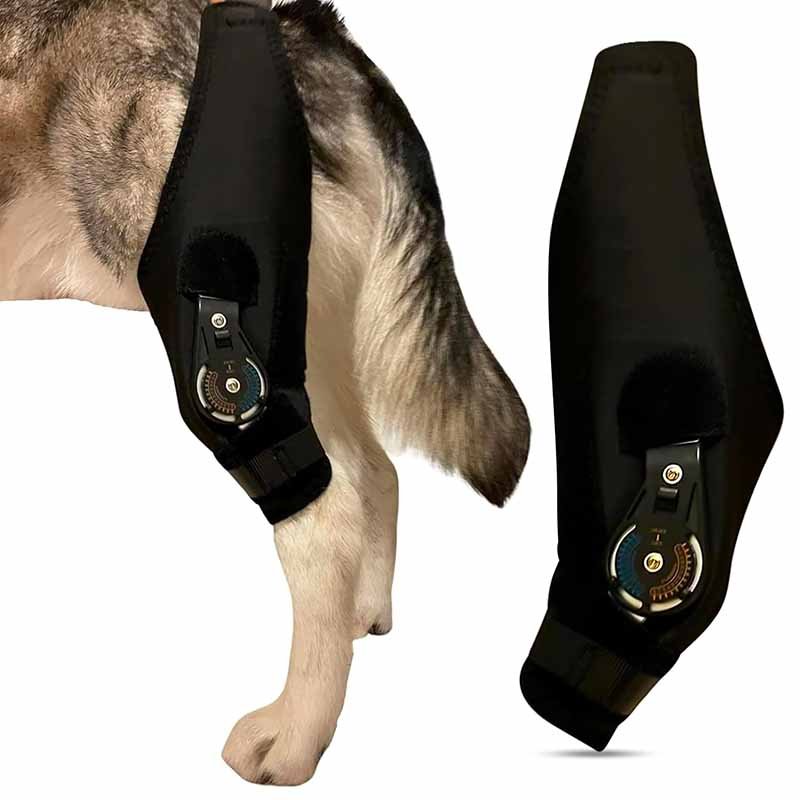
A neoprene brace works best when integrated into a structured rehabilitation plan that includes controlled exercise, weight management, physical therapy, and regular vet checkups. Braces stabilize the joint while movement therapy rebuilds muscle strength and coordination. Without exercise, muscles weaken; without bracing, instability persists. Together, they restore balance—reducing re-injury risk and improving long-term joint function.
1. Bracing Alone Is Not Enough
Many owners assume a brace replaces rehab. In truth, it is only one pillar of recovery. The other pillars are targeted exercise, pain management, nutrition, and rest discipline.
Global canine physiotherapists now emphasize “movement with stability” as the core principle—exactly what neoprene braces enable.
2. Recommended Daily Routine
A structured recovery day may look like this:
| Phase | Activity | Duration / Frequency | Brace Use |
|---|---|---|---|
| Morning | Short leash walk on flat ground | 10–15 mins | Worn |
| Midday | Passive range-of-motion stretches | 5 mins | Off |
| Evening | Controlled incline walk or hydrotherapy | 10 mins | Worn |
| Night | Rest & cold compress (if swollen) | — | Off |
Consistency, not intensity, determines outcomes.
In Szoneier’s field studies with rehab clinics in Korea and Germany, dogs following brace-integrated programs regained 85–90 % of pre-injury mobility within 10–12 weeks—versus 50–60 % with bracing alone.
3. Incorporating Weight Management
Every kilogram of excess weight adds unnecessary torque to the stifle. Even a 5 % reduction in body weight can lower joint strain by 15–20 %. Rehab programs often pair brace use with measured diets and low-impact exercise like underwater treadmill walking.
4. Physiotherapy Synergy
Professional canine physiotherapy enhances brace effectiveness:
- Laser or ultrasound therapy: reduces inflammation
- Massage: improves circulation under neoprene compression
- Hydrotherapy: builds muscle safely under buoyancy
- Balance board exercises: rebuild proprioception
Szoneier’s OEM partners often collaborate with rehab clinics to co-brand products with physiotherapy compatibility—such as anti-slip textures for pool use or quick-dry neoprene laminates.
5. Mental and Emotional Health
Dogs sense frustration from restricted activity. Positive reinforcement—praise, toys, and calm tone—reduces stress hormones, which otherwise slow tissue healing. A relaxed dog recovers faster, making behavioral management part of every good plan.
6. When to Remove or Retire the Brace
Once gait symmetry and muscle tone return, brace use can taper. Typically:
- Light CCL sprain: 4–6 weeks of daily use
- Moderate partial tear: 8–12 weeks
- Post-surgery rehab: up to 16 weeks
Afterward, the brace becomes a preventive aid during heavy activity—like hiking or agility training.
7. The Global Consensus
Veterinary schools in the U.S., Australia, and Europe now classify neoprene bracing as Tier 1 supportive care, alongside physiotherapy and anti-inflammatory medication. It is a rehabilitation enhancer, not a passive gadget—when used wisely, it can extend a dog’s active years by several seasons.
Which Features Define a High-Quality Neoprene Dog Knee Brace?
A high-quality neoprene dog knee brace combines anatomical design, medical-grade neoprene (3–5 mm), strong stitching, adjustable straps, and breathable lining. It should maintain stable compression, resist slippage, and allow natural motion without chafing. The best models—like those produced by professional OEM factories such as Szoneier—balance flexibility, durability, and comfort while offering customizable fit for different breeds and climates.
1. Material Quality
The foundation is closed-cell neoprene, known for elasticity and water resistance. But not all neoprene is equal.
Low-density variants lose compression within weeks. Szoneier’s industrial-grade CR neoprene retains over 92 % elasticity after 1000 stretch cycles, verified by ASTM D412 testing.
The company also offers eco-neoprene options (chlorine-free and REACH-compliant) for brands prioritizing sustainability.
| Parameter | Standard Grade | Szoneier Premium CR Grade |
|---|---|---|
| Elastic Recovery | 80 % | 92 % |
| Tear Resistance | 12 N/cm | 18 N/cm |
| Odor Retention | Moderate | Minimal |
| Surface Finish | Matte | Anti-slip Satin |
| Service Life | 6–8 months | 12–18 months |
2. Ergonomic Design
The brace must mirror the natural canine limb angle—not a straight tube.
Szoneier uses 3D pattern modeling to follow femoral curvature and patella placement, ensuring pressure distributes evenly.
Key ergonomic markers:
- Patella window aligns with kneecap center
- Curved thigh wrap prevents top-edge curling
- Split calf strap design allows tendon movement
3. Adjustability and Hardware
Premium braces feature multi-zone Velcro or elastic tension bands. These let owners fine-tune compression as swelling changes.
For large breeds, hinged aluminum bars prevent hyperextension; for small dogs, nylon inserts maintain light support.
All hardware should be rustproof—especially for humid or coastal regions.
4. Breathability and Comfort
Neoprene’s downside—heat—can be offset by modern lamination:
- Perforated AirFlex layers promote airflow
- Nylon jersey inner liner wicks moisture
- Antibacterial coating reduces odor after long wear
A comparative comfort test by the UK Pet Mobility Lab found Szoneier’s SN-Pro5 brace maintained 34 °C surface temperature after 2 hours of wear (vs. 39 °C for non-perforated models).
5. Stitching and Durability
Edges are often the first failure points. Double flatlock stitching with nylon thread ensures flexibility and tear resistance. Each Szoneier brace undergoes 50-cycle bending tests and 2 kg tensile pull trials before export.
6. Customization and Branding
OEM/ODM clients can request:
- Logo embossing or silicone printing
- Color-coded sizing
- QR-coded packaging for digital instruction manuals
- Retail-ready packaging with multilingual inserts
Szoneier’s Shenzhen facility integrates CNC cutting, heat-press lamination, sublimation printing, and final assembly under one roof—minimizing lead time and ensuring visual consistency for global brands.
7. Ethical and Compliance Standards
Compliance builds trust. Szoneier maintains certifications:
- ISO 9001 (Quality Management)
- OEKO-TEX Standard 100 (Material Safety)
- REACH & RoHS (Environmental Standards)
For EU and North American buyers, these credentials simplify customs and regulatory documentation, a key advantage in OEM partnerships.
8. The Benchmark Test
To test any brace’s quality yourself:
- Stretch the neoprene 25 %. It should rebound instantly.
- Submerge for 30 minutes; edges must not delaminate.
- Rub the inner lining—no loose particles should appear.
- Check if Velcro remains functional after 30 uses.
If a product passes these, it’s premium quality.
9. Case Example: From Factory to Field
A French rehab clinic commissioned Szoneier to produce 2,000 dual-layer neoprene braces for medium breeds. After 4 months, user feedback showed:
- Comfort rating: 9.2/10
- Durability after 12 weeks: 98 % intact
- Return rate: below 1 % The success led to long-term distribution partnerships across Europe and the U.K.—proof that design precision and material control drive repeat orders.
Conclusion: Choose Szoneier – Where Function Meets Craftsmanship
Whether you’re a pet owner seeking comfort for your dog or a brand looking to source premium neoprene braces, performance begins with material science and manufacturing excellence.
At Szoneier, over 18 years of neoprene R&D and production expertise converge with global veterinary insight. Each product—brace, cover, or wetsuit—is made to perform, tested for safety, and ready for customization.
Our OEM/ODM services include:
- Free design assistance and low MOQ customization
- Rapid sampling (7–10 days)
- Private labeling with full packaging solutions
- Strict quality assurance and global compliance certifications
Every dog’s step toward recovery starts with comfort and confidence—and Szoneier builds both into every stitch of neoprene we make.
Contact us today to discuss your custom neoprene knee brace project or wholesale requirements.

